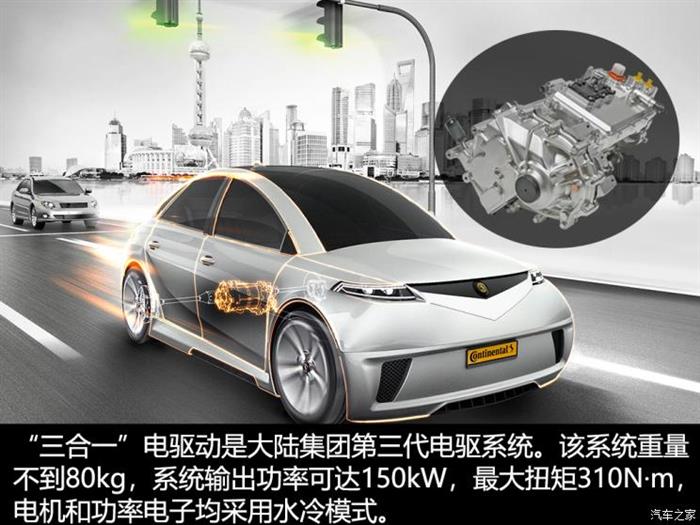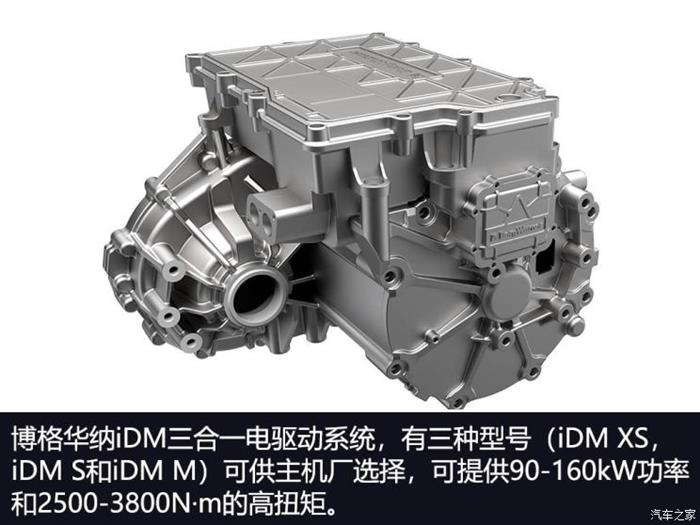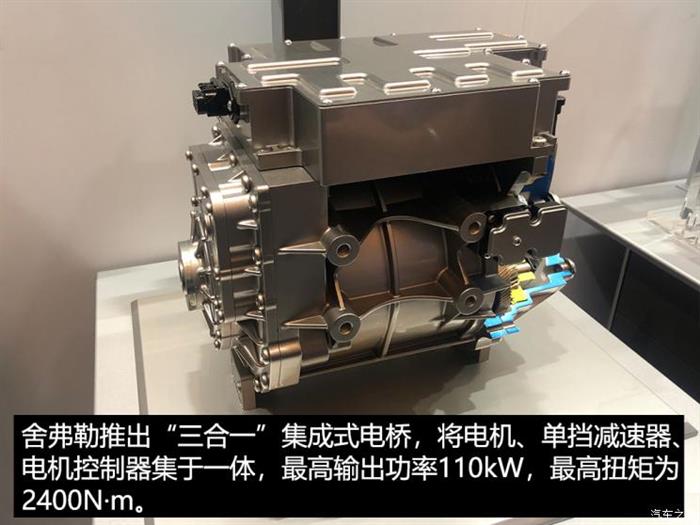What kind of technical advantages does the "three-in-one" electric drive have, so that many OEMs can compete? What can consumers get from it?
Since this year, the "three-in-one" electric drive system integrated with motors, reduction gearboxes (single or two-speed gearboxes) and inverters has sprung up. Recently, Porsche ’s first pure electric supercar Taycan, Equipped with a "three-in-one" electric drive system. So, what kind of technical advantages does the "three-in-one" electric drive have, so that many OEMs can compete? What can consumers get from it?
The "three-in-one" electric drive achieves the purpose of reducing weight and increasing the space in the car. This module can be mounted on different models of the OEM to reduce development costs.
International component companies such as ZF and Denso have integrated the "three-in-one" electric drive with traditional drive technology to form a highly integrated electric drive bridge.
The current global competition in the electric drive market is different. In the past, "buy, buy and buy" to reduce R & D and manufacturing time and costs is the mainstream choice for most vehicle and component companies.
For OEMs and suppliers, the biggest challenge in developing "three-in-one" electric drives is not at the technical level, but how to further control costs.
"Three-in-one" electric drive is lighter and more integrated
The integrated design of the "three-in-one" electric drive simplifies the external wiring between parts, achieving lightweight, cost saving and other purposes. For the OEM, the "three-in-one" electric drive makes the layout of the vehicle's various systems more flexible; for the end consumer, it can get the maximum seating space and ample vehicle storage space. This highly integrated design also lays the foundation for cars to become mobile "third spaces" other than homes and offices.
"Integrated electric drive system makes the vehicle chassis layout more flexible and the interior space more spacious"
The electric drive system originally applied in electric vehicles has almost no integrated design. The motor, reduction gear box, inverter, and motor controller are distributed in various places in the vehicle. At the same time, the drive motor also needs three long and heavy UVW high-voltage lines to connect to the inverter, which not only causes electromagnetic interference, but also is very expensive to produce and takes up a lot of space.
Therefore, the "two-in-one" electric drive integrated with the motor and the reduction box has appeared in front of the world, such as the electric drive system carried by Chevrolet Bolt (parameters | inquiry), although the system is more compact than the ordinary electric drive system However, the "two-in-one" electric drive still does not solve the problem of electromagnetic interference, and three high-voltage lines still exist. Therefore, the "three-in-one" electric drive came into being.
The integration of the "three-in-one" electric drive is like Lego toys, which standardize the design and production of individual car parts, thereby achieving modularity. This module can be mounted on different models of OEMs to reduce a lot of development costs.
"Chevrolet Bolt chassis design structure"
At present, the biggest difficulty of the "three-in-one" electric drive application is whether it can achieve "1 + 1 + 1> 3", which covers integration, NVH, cooling and lubrication requirements, and more clever structural design and other capabilities. . This is why there are only a handful of mass-produced models on the market equipped with "three-in-one" electric drive systems.
"Three-in-one" electric drive system for foreign companies
International companies such as ZF, BorgWarner, Schaeffler promote the combination of electric motors, gearboxes and inverters with traditional axles to form a highly integrated electric drive axle product, which enables the entire electric drive assembly system to have Lower cost and smaller size. These component companies have launched representative "three-in-one" electric drive products.
The ZF "three-in-one" electric drive optimizes the performance of the entire system to increase the power conversion efficiency by 6%. ZF has won a supply contract for Mercedes-Benz EQC's "three-in-one" electric drive system, which includes a motor, a single-speed gearbox, a differential, power electronics modules, and a full set of control software.
In addition, ZF's new electric drive system with integrated two-speed transmission is the first production model to be equipped with the Porsche Taycan. This product with compact and modular design can significantly reduce energy consumption and increase vehicle mileage by 5%.
Aisin and Denso produce a "three-in-one" electric drive system through a new joint venture, "BluE Nexus". Aisin's integrated drive system and Denso inverters have a very high global market share. The two parties also have leading technological levels in the field of motor development.

Continental's "three-in-one" electric drive system will also be available soon. At the end of this year, a compact SUV of a European brand and several Asian brands will be equipped with this "three-in-one" electric drive system from mainland China. In addition to traditional OEMs, a Sion electric vehicle launched by a German startup Sono Motors will also be equipped with this system. Continental started mass production of "three-in-one" electric drive systems at its Tianjin plant in the third quarter of 2019.

BorgWarner acquired the self-production capability of key components of the "three-in-one" electric drive system through the acquisition of motor company Remy and electric control manufacturer Sevcon. Following the mass production of the "two-in-one" eDM electric drive module integrated with the motor and the gearbox (supported by Weimar EX5, Great Wall Euler and other models), BorgWarner has launched the iDM "three-in-one" electric drive system . The drive system can be integrated on the front or rear axles of passenger cars and light commercial vehicles according to different design architectures and application requirements.

Magna established a joint venture with SAIC-owned Huayu Automobile in 2017 to start research and development and production of new energy electric drive systems, and has obtained Volkswagen's MEB platform electric drive system orders. Mass production is expected in 2020. Magna can provide three "three-in-one" electric drive systems with a maximum power of 100kW (low power), 180kW (medium power) and 253kW (high power), which can be directly used in electric vehicles or P4 structures (the motor is located in Front-wheel-drive vehicles on the rear axle).

Schaeffler's two-speed bridge has been applied to WEY P8 and Changan CS75 PHEV models. Schaeffler's strength in the field of electric drives is that it has strengthened its capabilities in high-performance motor design through the acquisition of Compact Dynamics, and the acquisition of motor stator winding equipment manufacturer Elmotec Statomat, which has mastered key manufacturing technologies for the new generation of motors.

Ushering in a diversified competitive landscape
These international parts and components companies have accumulated a large amount of technology in the field of traditional powertrain systems. In the face of electrification transformation and the layout of the "three-in-one" electric drive system, the quickest way is to make up for their shortcomings and improve their competitiveness through the acquisition or establishment of a joint venture. For automakers, it is a normal practice in the industry to reduce investment and time costs in the field of electrification through "buy, buy and buy".
Zhang Pandeng, a senior analyst at IHS Markit, told Autohome Editors: "The international supplier that originally occupied most of the market in the transmission field has an even greater advantage in the hybrid era." Schaeffler's P2 hybrid module (the motor is installed between the engine and the gearbox) is already on the market.
"ZF two-speed transmission"
"In the field of pure electric vehicles, the starting lines of all players are the same, and the market structure will be different." Zhang Pandeng said, "Bosch, Denso, Continental and Delphi, the four component companies can be said to be in the control of internal combustion engine systems. Monopoly position. However, in the field of electric drive, they will have more competitors. "
Strict cost control is the key
The "three-in-one" electric drive was originally a technical route promoted by the OEMs, such as the electric drive system applied by Tesla, Weilai's EDS electric drive system, BYD's "e platform", etc., all adopted " "Three in one" design. The reason why these OEMs invested in it in the early stage is that in addition to the recognition of the market prospect of the "three-in-one" electric drive system, they are more interested in mastering these core technologies in their own hands.
The threshold for R & D and production of "three-in-one" electric drives is very high. Without strong capital and technical strength, it will be difficult for enterprises to sustain. For component suppliers, development costs can only be shared if the output is large enough. Measured by the current demand of the electric vehicle consumer market, it is difficult for these companies to achieve the "scale effect" for the time being.
Right now, for component companies, the biggest challenge in developing a "three-in-one" electric drive may not be at the technical level, but how to control production costs in the early period of low profit or non-profit, and how to win more Many customers.

